Author: Mike Neville
Of the 4 primary ingredients used to make beer, barley malt is the most prominent, responsible for contributing not only the requisite sugars, but a variety of desirable flavors. As base malts go, brewers have plenty to choose from, with some of the most lauded being those produced in the United Kingdom, namely Maris Otter and Golden Promise.
Grown in England and kilned a bit darker than standard Pale Malt, Maris Otter is the quintessential British malt known for its ability to impart a robust nutty malt flavor to classic styles like Mild and Bitter. While often viewed as a substitution for Maris Otter, Golden Promise originated from Scotland and is said to impart a sweet, nutty characteristic that’s milder than its English counterpart.
I’m a big fan of English beer styles and have used both Maris Otter and Golden Promise numerous times, occasionally substituting one for the other. Interestingly, tasters in one past xBmt could reliably distinguish a beer made with Maris Otter from one made with Pale Malt, but such was not the case when comparing beers made with either Golden Promise or Pale Ale Malt. Curious of just how similar these classic UK malts really are, I put it to the test!
| PURPOSE |
To evaluate the differences between a British Golden Ale made with Maris Otter malt and one made with Golden Promise malt.
| METHODS |
In order to emphasize any differences as much as possible, I designed a simple British Golden Ale recipe where the grist consisted entirely of either Maris Otter or Golden Promise, both sourced from the same maltster.
Golden Snitch
Recipe Details
| Batch Size | Boil Time | IBU | SRM | Est. OG | Est. FG | ABV |
|---|---|---|---|---|---|---|
| 5.5 gal | 30 min | 34.5 | 4.7 SRM | 1.052 | 1.008 | 5.78 % |
| Actuals | 1.052 | 1.008 | 5.78 % | |||
Fermentables
| Name | Amount | % |
|---|---|---|
| Maris Otter OR Golden Promise | 11 lbs | 100 |
Hops
| Name | Amount | Time | Use | Form | Alpha % |
|---|---|---|---|---|---|
| East Kent Goldings (EKG) | 28 g | 10 min | Boil | Pellet | 5.5 |
| Caliente | 21 g | 10 min | Boil | Pellet | 17.7 |
| Caliente | 28 g | 5 min | Boil | Pellet | 17.7 |
| East Kent Goldings (EKG) | 28 g | 5 min | Boil | Pellet | 5.5 |
Yeast
| Name | Lab | Attenuation | Temperature |
|---|---|---|---|
| Pub (A09) | Imperial Yeast | 74% | 32°F - 32°F |
Notes
| Water Profile: Ca 74 | Mg 8 | Na 8 | SO4 121 | Cl 69 |
Download
| Download this recipe's BeerXML file |
After collecting the water for both batches and adjusting them to the same profile, I proceeded to weigh out and mill identical amounts of either malt.
With the water properly heated, I incorporated the grains then checked to make sure both mashes were at my target temperature.
During the mash rests, I prepared the kettle hop additions.
Once each 60 minute mash was finished, I removed the grains then proceeded to boil the worts for 60 minutes, adding hops at the times listed in the recipe.
When the boils were complete, I quickly chilled the wort.
Next, I transferred identical volumes of wort to separate fermenters.
Refractometer readings showed the Maris Otter wort was a couple SG points higher than the Golden Promise wort.
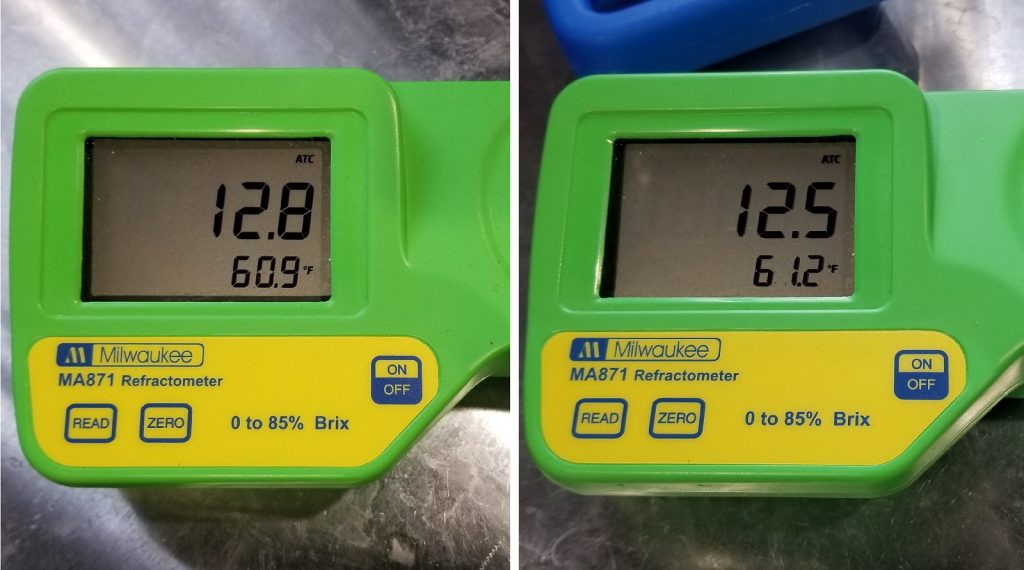
The fermenters were connected to my glycol unit and allowed to finish chilling to my desired fermentation temperature of 68°F/20°C, at which point I pitched a single pouch of Imperial Yeast A09 Pub into each batch.
The beers were left to ferment for 10 days before I took hydrometer measurements showing both had reached the same FG.
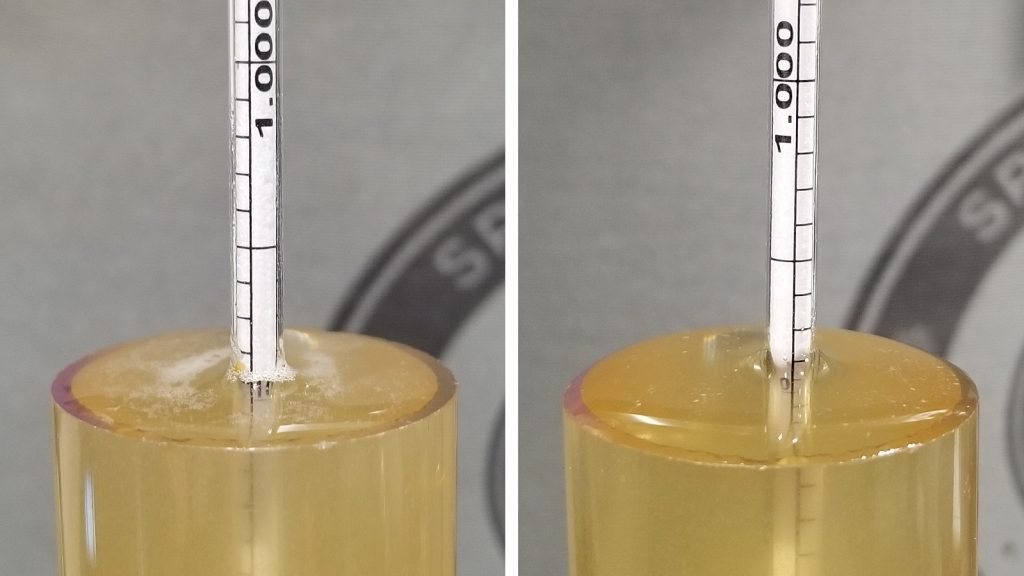
At this point, I cold-crashed the beers to 38°F/3°C and returned 24 hours later to pressure transfer them to CO2 purged kegs.
The filled kegs were placed in my keezer and burst carbonated overnight before I reduced the gas to serving pressure. After a couple weeks of conditioning, they were carbonated and ready for evaluation.
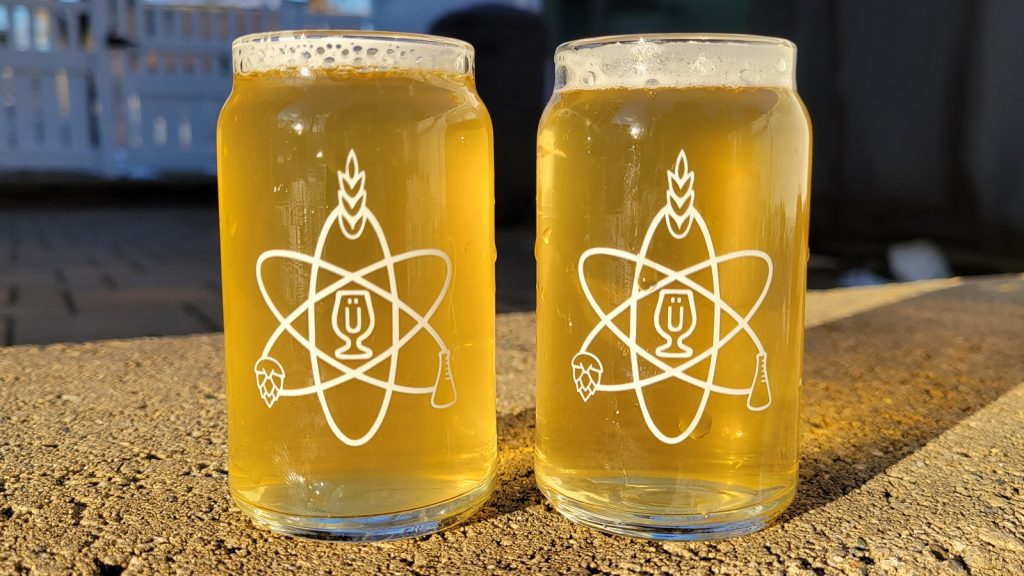
| RESULTS |
A total of 20 people of varying levels of experience participated in this xBmt. Each participant was served 1 sample of the beer made with Maris Otter and 2 samples of the beer made with Golden Promise in different colored opaque cups then asked to identify the unique sample. While 11 tasters (p<0.05) would have had to accurately select the unique sample in order to reach statistical significance, only 4 did (p=0.94), indicating participants in this xBmt were unable to reliably distinguish a British Golden Ale made with Maris Otter from one made with Golden Promise.
My Impressions: Out of the 5 semi-blind triangle tests I attempted, I correctly identified the odd-beer-out just once. Despite being fully aware of the variable and expecting the beers to be different, they were identical to me in every way. Both had a solid bready malt presence with just enough hops to balance things out.
| DISCUSSION |
The United Kingdom has a rich brewing history, from the Bitter of England to the Wee Heavy of Scotland. One thing most UK beers have in common is the notable malt character they get from classic grains such as Maris Otter and Golden Promise, which are said to contribute similar though perceptibly different flavors to beer. Interestingly, tasters in this xBmt were unable to reliably distinguish a British Golden Ale made solely with Maris Otter from one made entirely with Golden Promise.
One plausible explanation for these results is that both the Maris Otter and Golden Promise came from the same maltster and were seemingly kilned to the same degree (2.3 – 3.0 °L), meaning the only real differences are their variety and perhaps where each was grown. It could also be that the differences between the malts would become more apparent as higher amounts are used, though considering each made up 100% of the grain bill in this xBmt, I’m not convinced that’s the case.
As someone who has used Maris Otter and Golden Promise interchangeably for a variety of English and Scottish ales over the years, these results weren’t terribly surprising to me. I’ve no doubt the malts used in this xBmt were indeed distinct varieties, but seeing as neither blind participants nor myself could distinguish beers made with either, my future decision on which to use will be more a function of cost than characteristic.
If you have any thoughts about this xBmt, please do not hesitate to share in the comments section below!
Support Brülosophy In Style!
All designs are available in various colors and sizes on Amazon!
Follow Brülosophy on:
FACEBOOK | TWITTER | INSTAGRAM
If you enjoy this stuff and feel compelled to support Brulosophy.com, please check out the Support page for details on how you can very easily do so. Thanks!


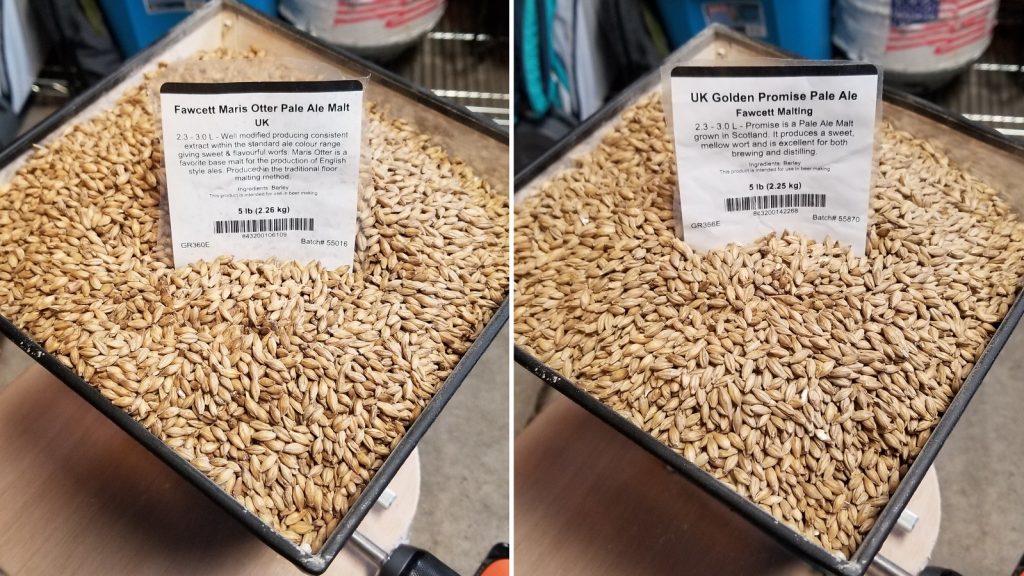
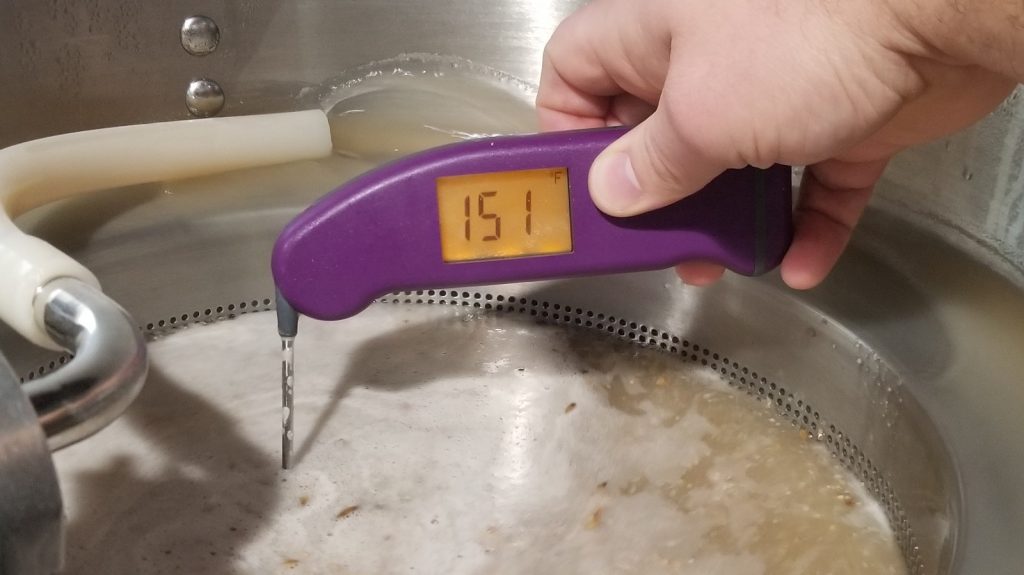
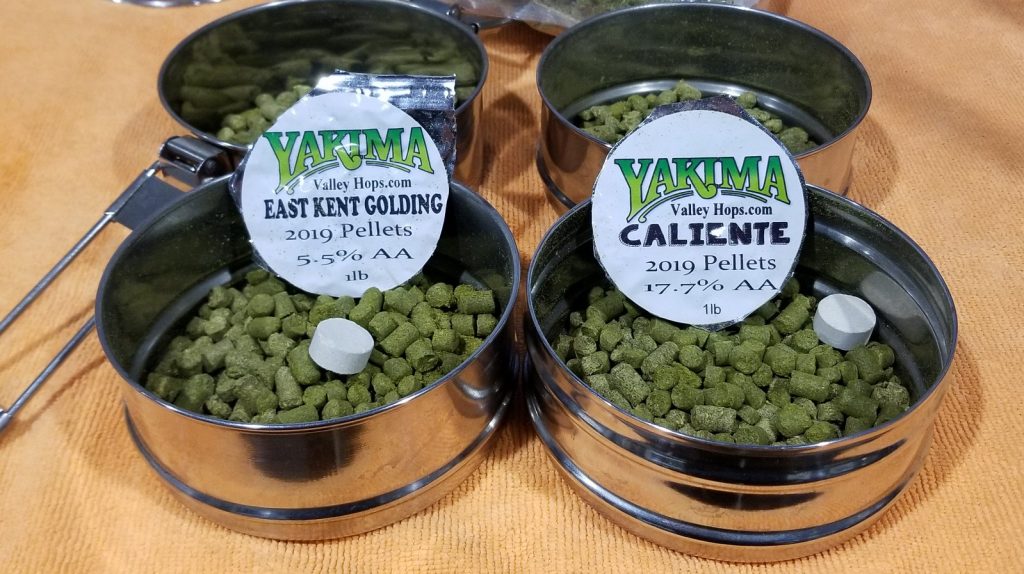
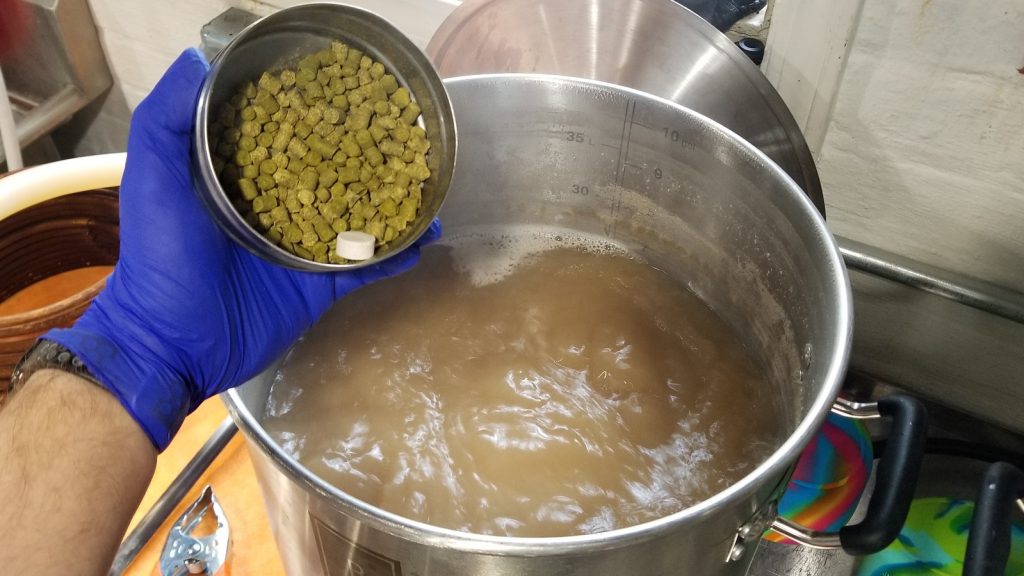
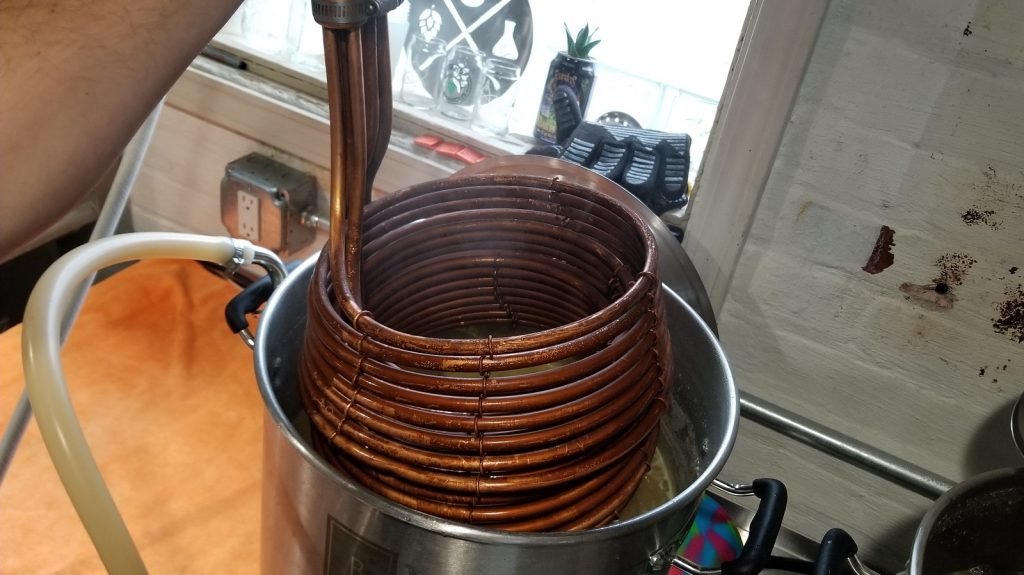
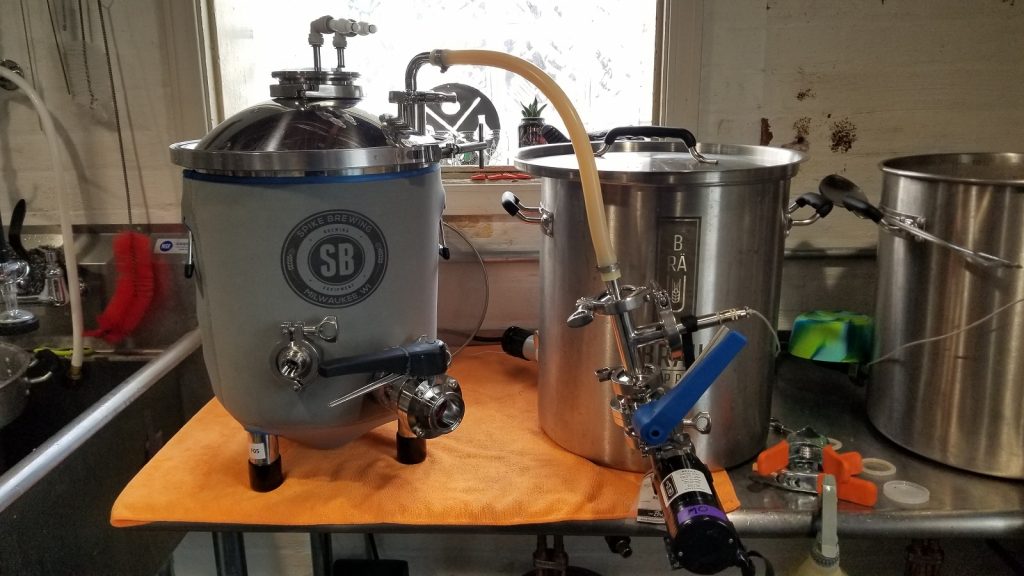
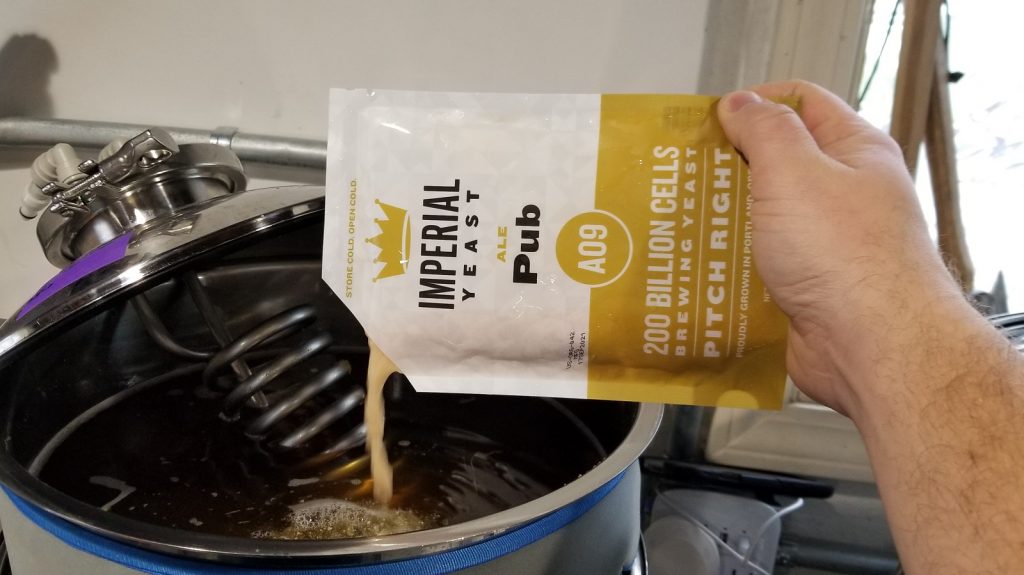
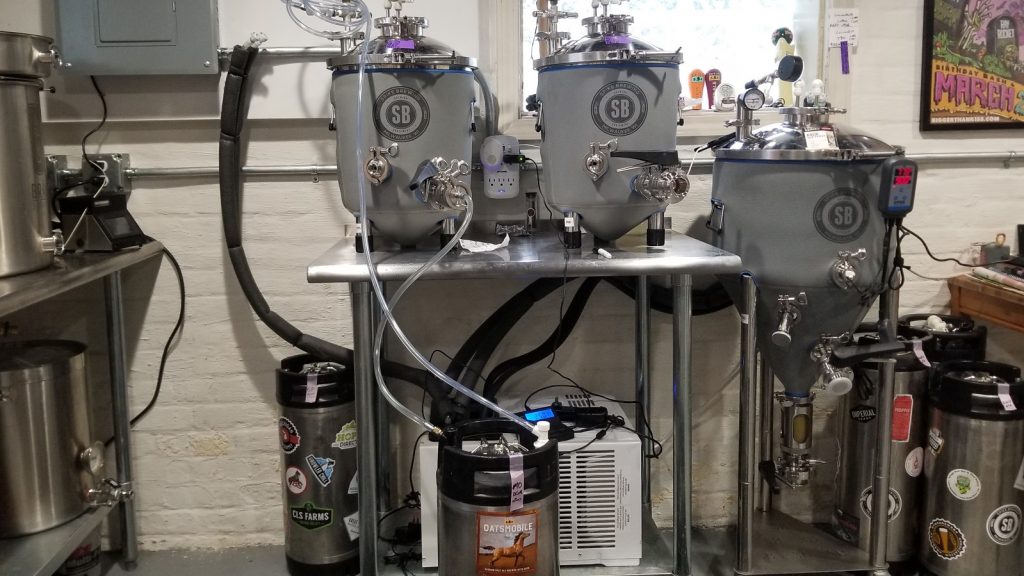











8 thoughts on “exBEERiment | Grain Comparison: Maris Otter vs. Golden Promise In A British Golden Ale”
A comparison between Maris Otter an an American 2 row would be interesting.
Said experiment has been done and is mentioned in this article
Been done. https://brulosophy.com/2016/06/06/grain-comparison-pt-2-maris-otter-vs-domestic-us-2-row-exbeeriment-results/
We agree!
How about Maris Otter or Golden Promise vs one of the Heritage grains from Crisp – Plumage ARcher or Chevalier
Maybe less hops so you can better compare the different grains?
I’ve found that when I brew my Timothy Taylor Landlord clone correctly using Golden Promise it comes out very close to the real thing. If I substitute Maris Otter it is still very good but not quite so close. The difference is subtle but for this well-balanced beer I believe it makes a difference. I can imagine that for almost any other beer style the difference would not be noticed.
I’d like to see how Lamonta Pale malt compares with both Maris Otter and Golden Promise